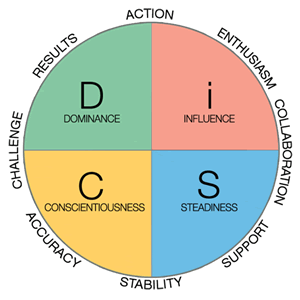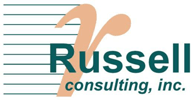Workplace Enhancement Notes
Volume 12, Issue 1
[for a PDF version of this newsletter: WEN Volume 12, Issue 1]
Topics . . .
- Fearless Performance Reviews
- Surviving Difficult Conversations
- Everything DiSC – A Tool for Understanding
Fearless Performance Reviews
Too often, the annual performance review is experienced as a painful process by both the employee and the manager. This annual discussion of the employee-s performance is frequently a time filled with anxiety: the employee approaches the review with a feeling that an entire year of effort is being judged, reduced to a single number on a five point scale. The manager approaches the review feeling ill-prepared at giving constructive feedback, not being sure how to structure the conversation to facilitate understanding, and wondering how the employee will respond to the feedback.
But there is a better way – a path to performance reviews that leads away from fear and anxiety and toward learning and growth in both the employee and the manager. We share this better way in our book Fearless Performance Reviews (McGraw-Hill, 2014) where we introduce a powerful framework for conducting truly fearless reviews.
Characteristics of Fearless Reviews. A fearless review involves an interaction between an employee and a manager that is characterized by an absence of anxiety along with the presence of courageous and gutsy directness
where both parties speak with integrity. There is open and honest two-way communication where both parties are comfortable speaking and hearing the truth. When engaged in a fearless dialogue about performance issues, both the manager and employee are focused on insight and learning and no topic is off limits.
Enabling a Fearless Review. Structuring a fearless review involves listening without judging and speaking without feeling judged. We have compassion toward the other person – especially when he or she irritates us. And we take ownership for our own contribution to whatever performance challenges being discussed. All of this enables us to mutually and fearlessly explore the causes of performance challenges and roadblocks and find new ways of working together that overcome these challenges and move us toward achieving our common goals.
Achieving a truly fearless review (and the level of authenticity and directness that such a review requires) is more about the mindset used by both the manager and employee than about the form they end up using or even how the conversation between the two of them is structured. Mindset determines everything!
The Collaborative Mindset. While there are many factors that contribute to a fearless review, none of the factors is as important as the mindset or belief system that the manager and employee use as they approach their conversation. Building on the profound work of Dr. Chris Argyris, we discovered that fearless conversations and fearless reviews are made possible when people adopt what we have called the Collaborative Mindset. When people approach a performance review using a Collaborative Mindset, a meaningful dialogue is more likely to emerge – even when difficult topics are explored.
The Governing Values for Fearless Reviews. The Collaborative Mindset is comprised of a set of governing values, supporting assumptions, and enacting behaviors that enable a fearless performance review. Since the governing values represent the foundation of a fearless review, we spend an entire chapter in Fearless Performance Reviews highlighting the values that, if embraced by both the manager and employee, enable a meaningful dialogue:
- Authenticity – Being honest with oneself and others, acting with integrity, demonstrating congruence between one’s inner thoughts and external expressions.
- Valid Information – All relevant information is shared so that everyone understands what they need to know in order to make decisions and take actions based upon a . . .
- Free and Informed Choice – People make their independent decisions based upon good information, not due to coercion, which enables them to have . . .
- Personal Commitment to the Choices Made – Individuals have greater ownership and take greater responsibility for the choices that they participate in based upon . . .
- Transparency – People feel comfortable with open, honest, and direct communication with no “hidden agendas” or undiscussables . . . which is best done with . . .
- Empathy – Individuals have compassion for others and differing viewpoints and a genuine interest in understanding another’s perspective . . . which is made possible because . . .
- No One Person’s Truth is Absolute – Each person’s truth is a reflection of his or her own reality, how he or she perceives and interprets the world. Discovering a holistic truth emerges from respecting others’ truths.
Imagine what a performance review might feel like if both the manager and employee embraced these values? We have found in our work that when people demonstrate these values during the performance review there is a profound level of honest and meaningful dialogue that is so essential for an effective performance review.
Beyond the Values of the Collaborative Mindset. There is much more beyond these values that will enable a fearless review – particularly the enacting behaviors of the Collaborative Mindset. These behaviors reflect practices that enable the kind of meaningful dialogue that is so crucial to an effective and fearless performance review.
Contact Russell Consulting, Inc. Contact RCI to learn more about these behaviors and our innovative approach to conducting fearless performance reviews. We can help you design a fearless performance management system in your company and then build these crucial fearless skills in your managers and frontline employees.
Surviving Difficult Conversations
How healthy and effective are the -difficult- conversations in your organization? It’s a sad truth that few people know how to navigate the challenging terrain of difficult conversations. It’s an even sadder truth that the failure to conduct these difficult conversations in an effective way has a significant negative effect upon your company’s bottom line. When people aren’t able to speak honestly to one another, everyone suffers the consequences and productivity and profitability decline.
What Makes a Conversation Difficult?
A conversation becomes a difficult one when these conditions exist: (a) there is something significant at stake for one or both parties (e.g., social status, self-worth, financial security, etc.); (b) there is a difference of opinion, perspective, or needs – differences that are perceived to be incompatible; and (c) the atmosphere is emotionally charged.
There are two kinds of difficult conversations: a conversation that we know in advance is likely to be difficult and one where the conversation turns difficult
unexpectedly. In the first case we are able to do some advanced planning to help us stay focused on achieving a positive outcome; in the second case we need to quickly develop our response strategy.
Whether the difficult conversation is anticipated or comes out of nowhere, the key is being able to engage in some crucial self-reflection. The purpose of the self-reflection is to prevent you from being sucked into the emotional drama of the conversation and instead help you find a way toward reconciliation.
Simple Steps to Surviving a Difficult Conversation. The self-reflection that helps you survive a difficult conversation includes asking yourself the following questions: (1) Why has this conversation become a difficult one? What’s at risk for one or both parties? (2) What are my positive goals in this situation: for myself and the other person? (3) What am I doing right now that is contributing to the deteriorating conversation and what can I do to turn things toward a more collaborative outcome?
Once you have answers to the above questions, your next step is to simply listen. Pay attention, focus on understanding, and feel empathy for the other person (no matter how obnoxious he/she might be). By slowing things down through the act of empathic listening you will be surprised at how quickly the conversation becomes calmer, less volatile. Stilling the emotional response in yourself and by focusing all of your energy on understanding, you are less likely to get drawn into the drama of the moment and more able to constructively engage the other party – which allows you to begin exploring common ground and win/win possibilities.
Want to know more? Contact RCI to learn how we can help you and your staff build the skills needed to turn every difficult conversation into one that leads to understanding and productive outcomes.
Everything DiSC – A Tool for Understanding
Every day you come to work and interact with others. You meet and greet customers. You talk with co-workers about directions and goals. You are actively involved with others in making decisions and solving problems. Each of these interactions provides an opportunity for achieving mutual understanding – or misunderstanding.

These misunderstandings may come from poor communication or they may arise from something deeper and more fundamental: differences in the behavioral style of the two people interacting with each other. Research suggests that there are four broad behavioral styles in the workplace and that the quality of our relationships depends upon how well we understand and respect our own style as well as those of others. The four behavioral styles are:
- Dominance
- influence
- Steadiness
- Conscientiousness
While there are aspects of each behavioral type in each of us, certain behavioral tendencies are stronger than others. We may, for example, be high in influence and low in dominance – or the other way around. We may be very conscientious but have little inclination to dominance or steadiness in our daily work behaviors. It is the combination of the intensities of each of these four behavioral tendencies that leads to our overall personality, behavior, and communication styles in the workplace. Knowing our own unique combination of these four tendencies helps shed light on our working preferences, how we work under pressure, what we avoid doing, how we view others, how we communicate with others, and, finally, how we bring the greatest value to our organization.
Everything DiSC Personal Profile System®
Russell Consulting is an authorized distributor of the powerful Everything DiSC array of behavioral assessment products. Everything DiSC provides individuals feedback on the combination of the four behavioral dimensions and how they impact each person’s effectiveness as a leader, manager, team member, or customer service representative.
Want to find out YOUR behavioral style and how it impacts your effectiveness? Contact RCI to complete your Everything DiSC Profile. You’ll be very glad you did – and your co-workers will too!
Subscribe to Workplace Enhancement Notes
Get a FREE subscription to Workplace Enhancement Notes: Subscribe.
